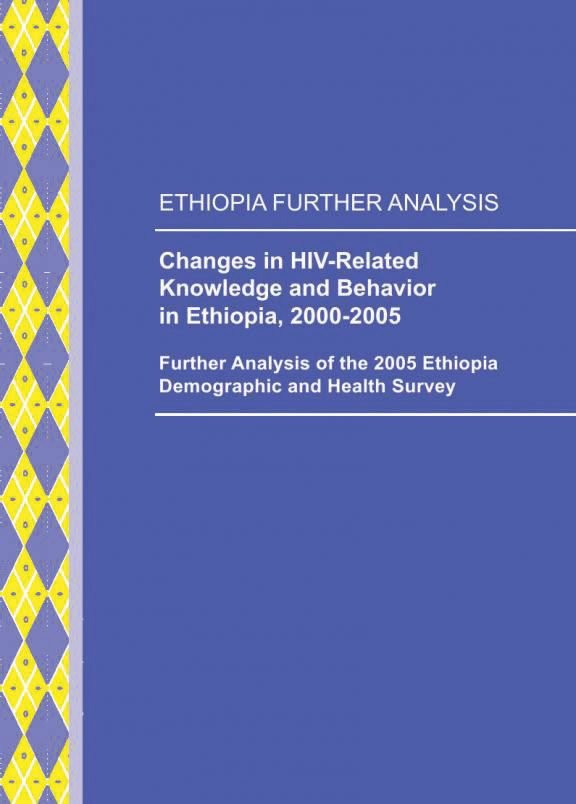- PUBLICATIONS
- JOURNAL ARTICLES
- ACCESS PUBLICATIONS
Publications Summary
- Document Type
- Further Analysis
- Publication Topic(s)
- HIV/AIDS
- Country(s)
- Ethiopia
- Survey
- Ethiopia DHS, 2005
- Language
- English
- Recommended Citation
- Suzuki, Chiho, Vinod Mishra, Pav. Govindasamy, Rathavuth Hong, and Yuan Gu. 2008. Changes in HIV-related Knowledge and Behavior in Ethiopia, 2000-2005: Further Analysis of the 2005 Ethiopia Demographic and Health Survey. DHS Further Analysis Reports No. 56. Calverton, Maryland, USA: Macro International
- Download Citation
- RIS format / Text format / Endnote format
- Publication Date
- April 2008
- Publication ID
- FA56
Download
 Changes in HIV-Related Knowledge and Behavior in Ethiopia, 2000-2005 (PDF, 634K)
Changes in HIV-Related Knowledge and Behavior in Ethiopia, 2000-2005 (PDF, 634K)
